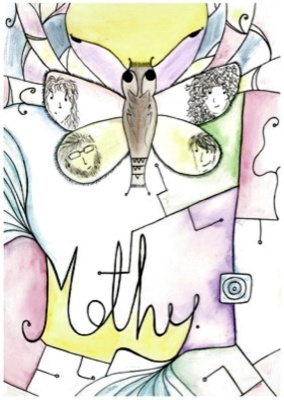MOTHY and other stories
BATS Theatre, Studio, 1 Kent Tce, Wellington
22/02/2015 - 08/03/2015
Production Details
“Hello, I am the butterfly… Moths have it pretty simple, just head on toward the light. That’s how moths die too you know? The light. What’s that saying about candles? Half as long but twice as bright? Your entire life is built heading toward that light until that light is not being a part of life anymore.”
Mothy, directed by Ryan Knighton for Fringe Festival 2015, is a show of intimate storytelling. We begin with ‘The Butterfly’ – who is a moth – building his second chrysalis in the hopes of this time, coming out as the butterfly he wants to be. As stories interweave, we meet a myriad of different characters, revealing the beauty at the heart of our tightly wound cocoons.
The first show ever to be performed in the new BATS studio space, ‘Mothy.’ reveals the metamorphosis taking place beneath the struggle of supermarkets, cigarettes, crowds and concerts as we all, essentially, travel towards the light.
Come and cosy up while Ryan, Oli, Stevie, Amy and Lily share their stories in our collective cocoon – in BATS studio space – every Sunday from 22nd February – 8th March.
Sunday 22nd February 6.30pm / 8.30 pm
Sunday 1st and 8th March 6.30 pm
Tickets: $10 / $7 for Fringe Artists and Addicts.
BATS Theatre Studio, 1 Kent Terrace
Book online: www.bats.co.nz
or call (04) 802 4175
Theatre ,
Sundays only
Browsing intriguing lives
Review by John Smythe 23rd Feb 2015
“Welcome to the cocoon” the programme note says, making this first-ever production in Bats Theatre’s cosy, sauna-like Studio space an ideal venue.
It starts and ends with a Moth hovering over a naked lightbulb. He seems to think he can get into a chrysalis and metamorphose into a butterfly but … Suffice to say that promise is never fulfilled (no surprises there) but he does end up in a reflective relationship, shall we say (to avoid a spoiler). And somehow he seems fulfilled by that.
The mosaic of stories that are played out between (15 in 55 minutes, the programmes says, which probably includes the Moth’s one; I’m not counting), forms a pattern of sorts with well-formed parts that only tangentially relate to each other. Random duck references almost give the illusion of a unifying theme but not quite. Whether that matters is a matter of taste, as is the soup someone gets to make – which, come to think of it, does constitute a metamorphosis of sorts.
The assortment of situations and characters manifested by Lily della Porta, Oliver Devlin, Stevie Hancox-Monk, Amy Griffin-Brown and Ryan Knighton are clear and intriguing, in and of themselves. Production designer Harriet Denby’s calico-curtained and draped setting allows the visual landscape to change with a pleasing fluency, abetted by Oliver Devlin’s sound design and Eleanor Martin’s technical operating.
Lonely Margaret Stern inherits a recipe to win friends; a pianist gives “a tame and insipid performance” of a Chopin Nocturne; lonely Jenny converses with a jar of Nutella and may form a new relationship with a bottle of rum. While a group of primary school kids go through the motions of making a play to oblige their principal, their real concern is the fates of an absent classmate and a teacher. An adventurous biology team of differing individuals make camp in the mountain on their mission to track down the Yeti; a philosophy lecture is satirised; an old man contemplates an unusual one-off pie; a robot usurps its creator. The ideal of a lake comes into question, not to mention its eels; a taken-for-granted caretaker has his own secret and makes the mistake of sharing it; the value of a hoarder’s hoard diminishes with his memory …
A few of the scenarios are revisited, which helps to create a sense of cohesion. The penultimate story is a radio play about a boatman /woman, delivered by shadows behind the curtains. Beyond the pictures it conjures in our minds, the unreliability of memory and therefore history, as it morphs into myth and legend, is addressed for us to ponder. The Moth’s final fantasies reinforce the abiding questions around the nature of ‘reality’.
There is an easy delight in the way the team work together which is charming and enjoyable, in and of itself. And in the aftermath it is surprising to realise how many moments in how many lives we have browsed, engaging with much in much the same way as we might a skimmed magazine, noting which stories we might return to later for a full, in-depth read. Except we can’t. Such is life.
Copyright © in the review belongs to the reviewer





Comments